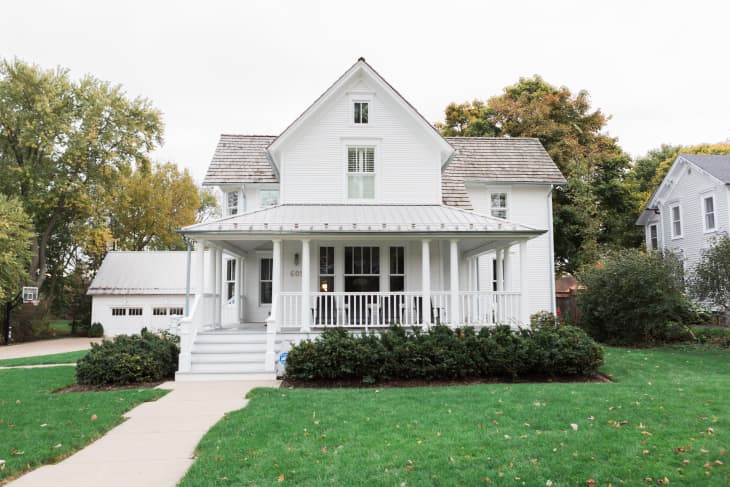The Nitty Gritty: 3 Too-Real Ways Young People Are Making Homeownership Possible

The reality of owning a home isn’t as simple as it used to be decades ago. Many first-time home buyers are now waiting longer than they ever have, around six years, before shifting from being a renter to being a home owner. (And rates of homeownership are down further than they have been in nearly fifty years.) For many potential home buyers, unsurprisingly, the down payment is their biggest obstacle.
Housing prices have gone up while household income has remained relatively stagnant. The median home listing price has risen about $40,000 since 1990, and the median income has only increased by $2,000. If a first-time home buyer needs to put down 20 percent, it’s only about $8,000 more than what it would have been twenty years ago. Not bad — but you may still be left wondering how anyone today is coming up with $40,000 to put down on a home. It’s more than likely that one of these three methods is at play.
1. Borrowing From Family, Friends and the Community
More millennials are living at home with family, indicating a possible cultural shift with multiple generations in one home. This gives young people an opportunity to save and pay off student debt. It may also allow family members to save more with financial contributions from their children to household bills. Family members may also be willing to invest more interest financially into the purchase of a first home for young people in this scenario.
The Federal Housing Administration (FHA) is flexible when it comes to how money is put down on a home, allowing 100 percent of a down payment to be gifted. Young people with meager savings are able to go to family and friends or crowdsource funds for the full down payment. The gifted down payment may come from any of the following:
- A relative
- A partner they’re engaged to
- A labor union or employer
- A close friend who demonstrates a documented interest in the borrower
- A charitable organization
The catch is the gift must be made without a promise that it needs to be paid back. The borrower secures a signed gift letter from the lending organization or individual, along with a requested bank statement from the lender.
2. Putting Down the Minimum and Borrowing the Rest
What do you do when you’ve barely saved anything for your first home and your credit score is less than perfect? All young home buyers have to do is put down as little as 3.5 percent for an FHA loan, or as little as 5 percent for a conventional PMI-insured loan. While those types of loans come with their own added expense — usually a monthly fee as high as a few hundred dollars — the limited capital required at closing makes it a more viable option for buyers who don’t have a ton of money saved up.
3. Taking Money Out of Retirement Funds
Scaling back on one’s finances and making a strict budget will help you save for a home purchase, but sometimes you do what you have to in order to secure the future for family and yourself. For some, that means leveraging a 401(k) or retirement savings for a down payment. After a couple of years, a nice nest egg has been established in retirement savings — enough to meet that minimum requirement for a down payment.
The rule of thumb has always been to never touch retirement saving until you’re actually retiring, since taking money out of a retirement account early is usually subject to heavy penalties. But as a first-time home buyer, you can take a one-time $10,000 distribution from your IRA retirement account without incurring the 10% tax penalty (although that $10,000 would be added to your income, and taxed, for the year). For those who have a steady cash flow and some savings, this option is appealing, considering monthly payments are going straight back into retirement and potentially saving the borrower more monthly, instead of through a mortgage loan, by paying more monthly in the first five years.
While these scenarios are far from ideal traditionally, they do provide avenues for the millennial generation to purchase a first home on a shoestring budget. Many people today need to smartly assess their options in the current economic climate and make a realistic choice that fits very specific circumstances unique to every young individual or couple. These young folks are doing what they have to do to make their homeownership dream come true.